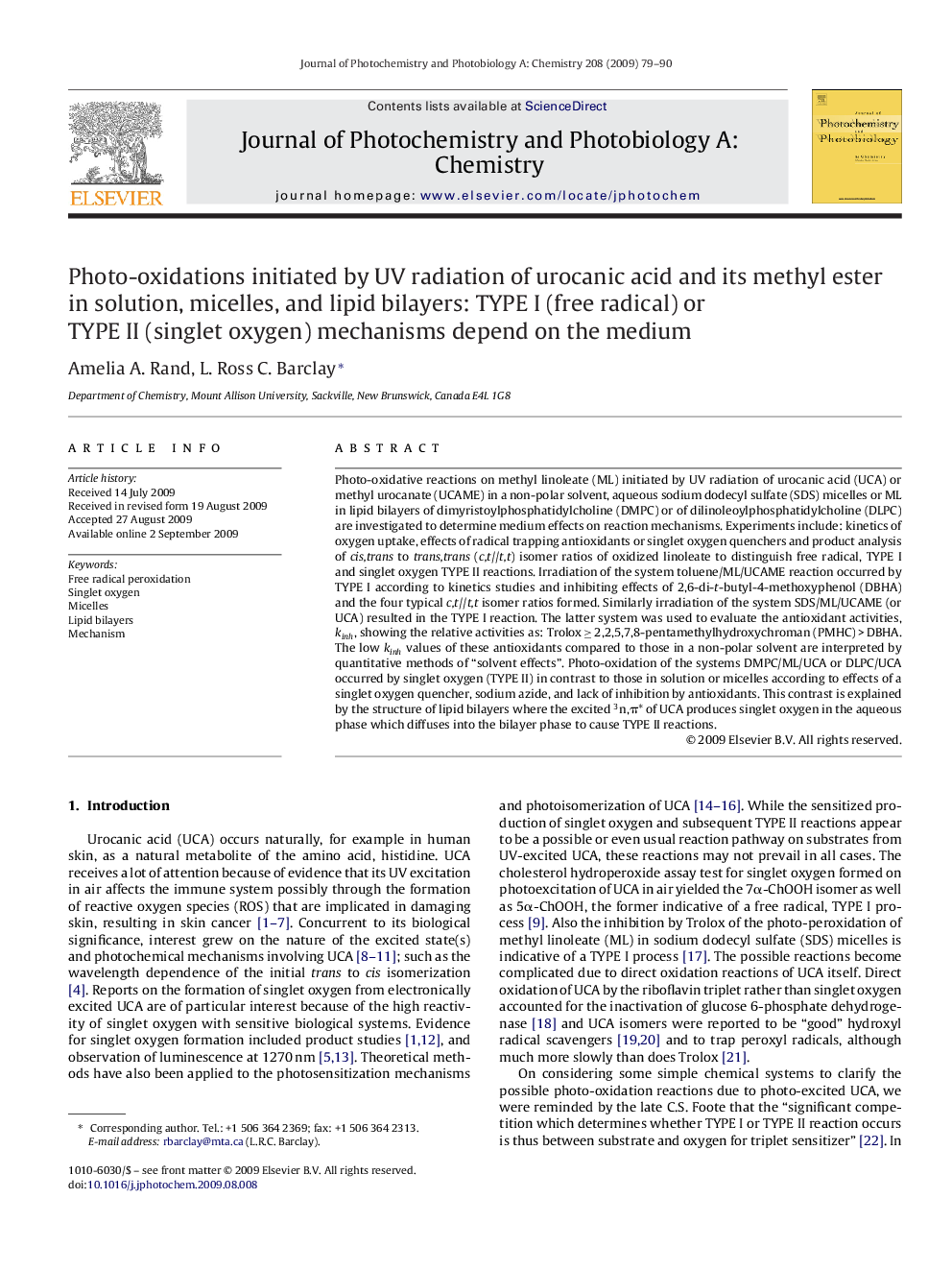| Article ID | Journal | Published Year | Pages | File Type |
|---|---|---|---|---|
| 27812 | Journal of Photochemistry and Photobiology A: Chemistry | 2009 | 12 Pages |
Photo-oxidative reactions on methyl linoleate (ML) initiated by UV radiation of urocanic acid (UCA) or methyl urocanate (UCAME) in a non-polar solvent, aqueous sodium dodecyl sulfate (SDS) micelles or ML in lipid bilayers of dimyristoylphosphatidylcholine (DMPC) or of dilinoleoylphosphatidylcholine (DLPC) are investigated to determine medium effects on reaction mechanisms. Experiments include: kinetics of oxygen uptake, effects of radical trapping antioxidants or singlet oxygen quenchers and product analysis of cis,trans to trans,trans (c,t//t,t) isomer ratios of oxidized linoleate to distinguish free radical, TYPE I and singlet oxygen TYPE II reactions. Irradiation of the system toluene/ML/UCAME reaction occurred by TYPE I according to kinetics studies and inhibiting effects of 2,6-di-t-butyl-4-methoxyphenol (DBHA) and the four typical c,t//t,t isomer ratios formed. Similarly irradiation of the system SDS/ML/UCAME (or UCA) resulted in the TYPE I reaction. The latter system was used to evaluate the antioxidant activities, kinh, showing the relative activities as: Trolox ≥ 2,2,5,7,8-pentamethylhydroxychroman (PMHC) > DBHA. The low kinh values of these antioxidants compared to those in a non-polar solvent are interpreted by quantitative methods of “solvent effects”. Photo-oxidation of the systems DMPC/ML/UCA or DLPC/UCA occurred by singlet oxygen (TYPE II) in contrast to those in solution or micelles according to effects of a singlet oxygen quencher, sodium azide, and lack of inhibition by antioxidants. This contrast is explained by the structure of lipid bilayers where the excited 3n,π* of UCA produces singlet oxygen in the aqueous phase which diffuses into the bilayer phase to cause TYPE II reactions.
